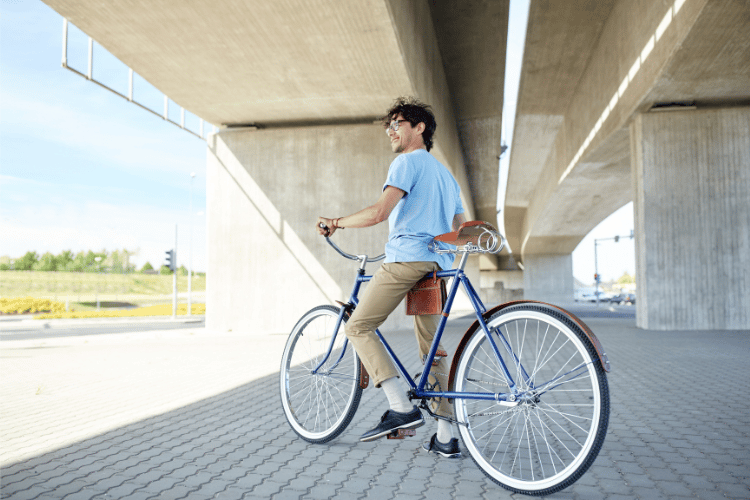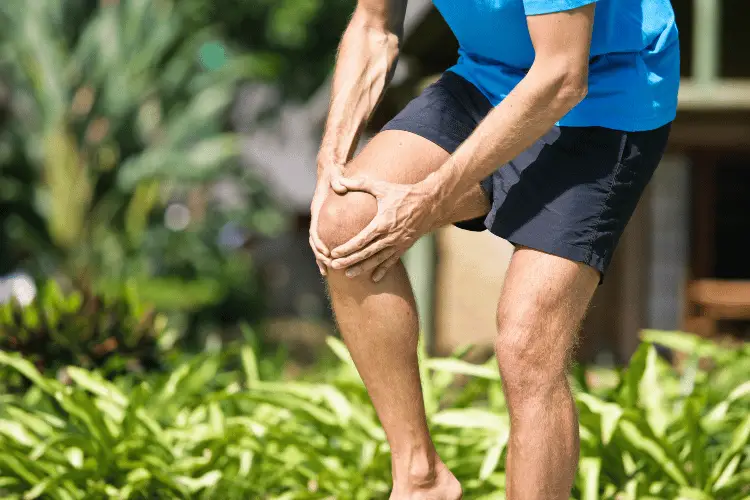No, fixed gear bikes are not bad for your knees. Riding a fixed gear bike with the correct technique does not harm your knees in the long run.
There is some leeway depending on factors such as the rider’s knee history, the bike’s brakes and gears, and the rider’s position.
This article aims to provide a more in-depth analysis of fixed-gear bicycles. You’ll find out what causes knee pain, how to avoid it, and whether or not riding a bike is helpful for knee pain.
Also, we’ll dive into the reasoning behind the common belief that fixies are harmful to your knees.
Quick Navigation
What Is A Fixed-Gear Bike?

Fixies are short for “fixed-gear bicycles,” which have permanently attached rear wheels and a single-speed drivetrain.
Therefore, you cannot rest on your bike’s handlebars and expect it to move forward; constant pedaling is required.
Fixies are among the simplest bicycle designs without gear shifters, derailleurs, double or triple-chainring cranksets, or brakes.
Did you know that the versatility of a fixed-gear bicycle makes it a viable transportation option for both commuting and racing?
Most people who ride fixies live in cities. Fixie bikes are the main way cycling fans and professionals get around cities because of how quickly they can get around city streets.
People also have a lot of respect for the world of competitive fixed-gear cycling. Track bikes are made for racing in a velodrome or on a road course, but you can also see them on the streets of some cities.
Do Fixie Bikes Hurt Your Knees?

When a bike is ridden badly, pressure builds up over the kneecap. This pushes the kneecap down onto the bones below, which can cause pain in the front of the knee.
However, some leeway depends on factors such as the rider’s knee history, the bike’s brakes, gears, and the rider’s position.
Why Do People Say Fixies Are Bad For Your Knees?
The rider must keep pushing down the pedals to keep going with a fixed-gear bike. You can’t just sit back and take it easy on a fixie.
This means that as you pedal, the muscles and tendons around the knee will keep working.
When you pedal, the muscles holding the kneecap can get tired from overuse. Chondromalacia patella is a condition that happens when the muscles that keep the knees stable get out of balance from being used too much.
Nevertheless, the following are a few reasons why people believe fixies are bad for your knees.
1. Pre-Existing Knee Condition
It has been found that the “locked-in” nature of a fixed gear can aggravate the symptoms of certain knee conditions. Individuals with pre-existing knee conditions are at a higher risk.
2. No Brakes
For safety, a fixie used on the road needs brakes. If it doesn’t, you’ll put a lot of stress on your knees if you have to slow down or stop by resisting the crank with your legs.
3. Oversized Gear
Using muscle power to climb hills at cadences of less than 70 turns per minute is hard on the knees, and this is made worse when riding a fixed gear.
Even if your bike doesn’t have a derailleur, you shouldn’t have gear that is too high for the terrain.
4. Uncomfortable Riding Position
In fixies, the rider’s position is uncomfortable. Some cyclists omit the step of measuring their saddle height, saddle setback, and reach to the handlebar.
If a new saddle shifts the rider’s sit bones uncomfortably, it could aggravate their knee pain.
Why Do My Knees Ache After Biking?

Most of the time, patellofemoral pain syndrome causes pain in the kneecap and thigh joint.
This condition is often caused by overuse in sports or other high-impact activities (among bikers, overuse is the more common culprit.)
If the patella (kneecap) is out of place, it can also cause or worsen these problems.
Tips To Prevent Knee Pain
According to a study published in the Open Access Journal of Sports Medicine in 2018, as many as 33 percent of cyclists have experienced knee pain due to the knee’s complexity.
1. The height of your saddle must be just right
If your saddle is too low, you could be putting unnecessary strain on your quadriceps, patella, and ligaments, as explained by Kevin Schmidt, owner of Pedal PT and a physical therapist who specializes in bike fittings.
If you have someone steady the bike while you pedal backward with your heels on the pedals, you can find the optimal position for your knees.
2. Avoid overextension
Cut down on the distance between the saddle and the handlebars to stop the rider from going too far back. But your knee angle should never be less than 30 degrees at the bottom of a pedal stroke.
3. Discover effective cycling exercises
Since the IT band isn’t a muscle, you can’t stretch it. Feldman says foam rolling can loosen up the muscles in the IT band. Pain can also be lessened by stretching and building up nearby muscles.
4. Have your bicycle fitted by a pro
Look over your bike. Schmidt says that when you look at someone from the front, their “hips, knees, and feet” should make a straight line. A bike fitter can help you put your legs in the right place on the bike.
Are Bikes Good For Knee Pain?

When your knee hurts, it can make it hard to work out. If you have knee pain, you might feel better if you change how you work out or the shoes you wear.
You won’t do things that are hard on your knees. Instead, you’ll focus on strengthening your muscles in a way that doesn’t hurt.
Cycling as a form of exercise is good for everyone, but people with knee pain will feel better right away.
Low-impact activities like biking are easy on the body’s weight-bearing structures. Also, your hips and feet, not just your knees.
Also, the motion of pedaling helps exercise some joints, which can help relieve pain and stiffness. Riding your bike may help ease some of those problems if your knees hurt and are stiff.
Cyclists like that cycling are low-impact and good for their knees and other joints. Cycling is also a great cardiovascular workout.
As a result of this exercise, cyclists can improve their muscle strength and cardiovascular health.

6 thoughts on “Are Fixed Gear Bikes Bad For Your Knees? (Explained)”